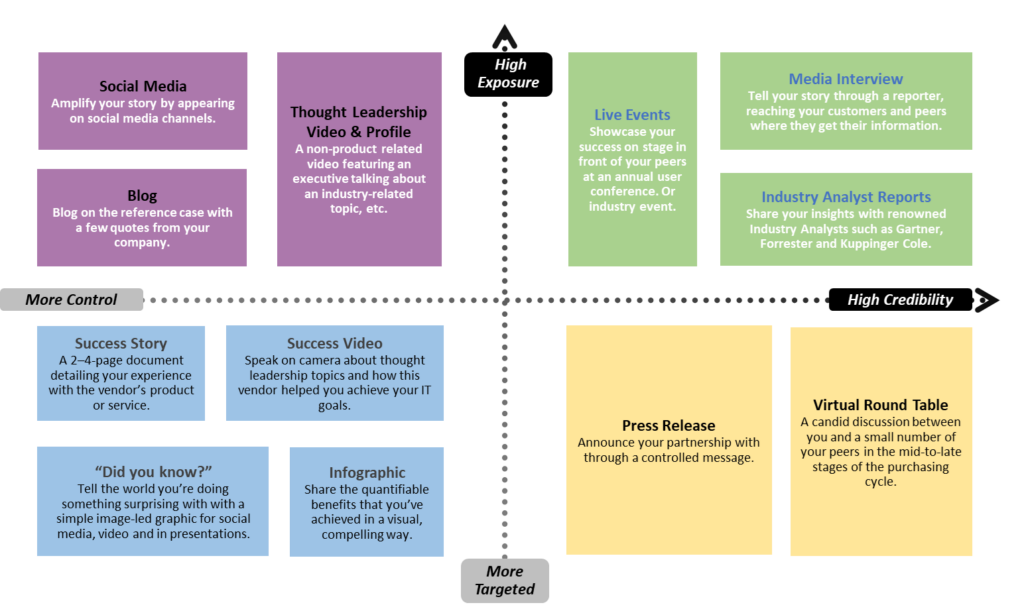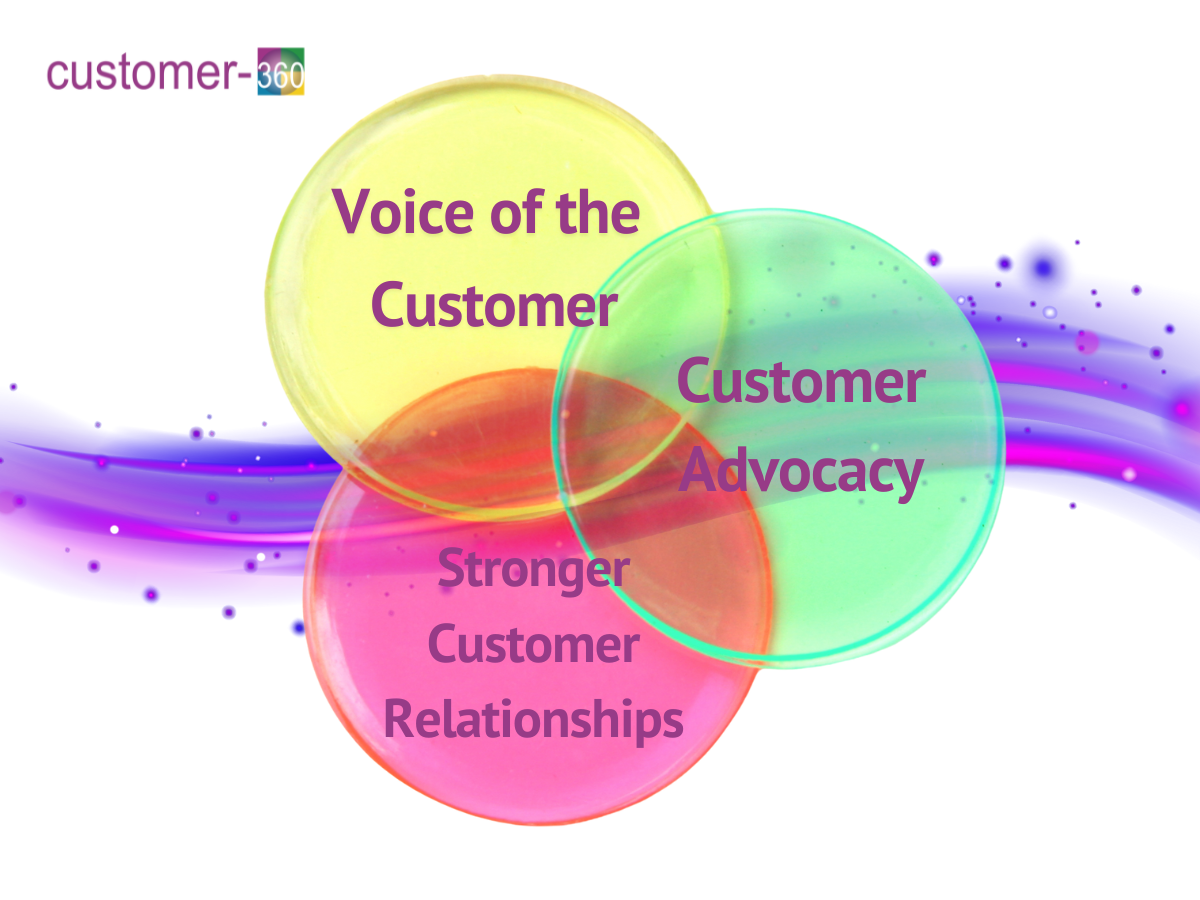Customer advocacy helps your company drive revenue growth, build brand strength, reduce attrition, and differentiate your company from the competition. Its power lies in activating the customer’s voice at any stage in their journey and at multiple organizational levels.
How do you turn your customers into advocates for your brand?
First, you need to identify customers who can become potential brand advocates. Second, you need to engage with these potential advocates about your customer advocacy program, demonstrating that the partnership has mutual benefits. Once you have customers who have raised their hands to become advocates, you are ready to activate their voice on behalf of your brand.
Identifying Customers to Become Advocates
Do you know how and where to identify customers who may become your advocates in your organization? Consider these sources that may already be at your fingertips:
Customer Feedback Activities / Voice of the Customer Program
Does your company use a Net Promoter Survey (NPS) to gauge customer sentiment? NPS measures customer loyalty and their likelihood of recommending your product or service. The survey score is grouped into three categories: promoter, passive, and detractor. Any customer scoring in the promoter category is a prime candidate to become an advocate!
Customer Advisory and Product Advisory Boards are also excellent sources for customer advocate candidates. The participants selected to be on either board give you their time to provide feedback on your brand and/or your product. They are making an investment in your success that results in their success.
1. Customer Success Team
In my experience, this team has been a gold mine for helping to identify potential customer advocates. The team is on the front line of continuously engaging customers.
This team’s charter might differ slightly from organization to organization, but it includes customer onboarding, customer support, training, and communicating customer needs to internal stakeholders. Building a strong relationship with the Customer Success team may prove invaluable in helping you identify happy customers who are willing to advocate for your brand.
2. Digital Customer Community & User Groups
A digital customer community is a platform for sharing ideas and best practices about your product anytime, 24/7. A digital community makes it easy for your customers to engage with each other and your brand.
Likewise, in-person or online user groups gather to discuss their experiences with your product. It enables knowledge-sharing, networking, and customer feedback.
Both customer-gathering sources provide diverse experience and expertise about your brand & product. They strengthen the user community and provide user-generated content that may help you identify potential customer advocates.
Presenting Your Customer Advocacy Program
Once you have identified potential customer advocates, how do you engage them in becoming your brand advocates? Not all customers are the same, and they may be more comfortable sharing their success stories based on their goals and time constraints. Make it easy for your potential advocates by meeting them where they are.
Here is a step-by-step guide:
- Validate that customers want to hear from their peers. Use a quote from a well-known 3rd party source, like Gartner.
- Identify the mutual benefits of partnering with you to share their story.
- Demonstrate ‘what’s in it for the customer’ in partnering with you
- For their brand at a company level
- For their team
- For themselves
- Provide a visual of how you can partner to tell their story based on varying levels of commitment and exposure for each activity. Let the customer tell you which activities meet their needs, time constraints, and comfort level. Here is an example of presenting a range of options:

- In your presentation, give examples of customers who have already shared their stories.
- Layout the process for each activity you offer in your reference and advocacy program paired with the activity benefits. Include where the story will be posted or shared.
- Identify how to get started by setting expectations for a successful partnership. Consider offering your customers both a formal and informal option for participation in your customer advocacy program. Here are examples:
-
- Activity Agreement—This is a formal approach that allows a customer to give you specific permission to share their story. Some customer organizations like to have their legal team review any public engagement with a vendor. This would list all the activities in your customer advocacy program, how to participate, and how to end participation.
- Email Confirmation – An informal approach to outlining your customers’ agreement to share their stories. It usually summarizes the activities in which the customer has agreed to participate.
Ready, Set, Engage!
Now, you are ready to activate your customer advocates! Remember, this is about building a long-term relationship. You must nurture and empower your customer advocates throughout their journey with your brand with regular communication and opportunities to tell their stories.
Here is a customer engagement strategy that includes what I call the 4 R’s:
- Keep it real
- Stay relevant
- Be responsive, and
- Be ready to know your customers on a deeper level to drive loyalty
Turning your customers into brand advocates has several benefits. It increases revenue, builds brand strength, and is one of the best retention strategies.



